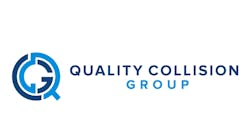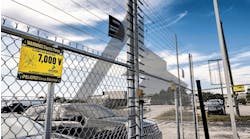If you were to ask most shop owners what their favorite part of the business is, chances are you’d get quite a few varied responses. It’s probably safe to say, however, that making phone calls would not be near the top of that list.
Phone calls are a necessary evil in the business, but they’re not always the most pleasant experiences. Especially if that phone call happens to be with an insurance company.
Most shop owners have had to deal with the runaround of insurance negotiations. Tim Ronak, a senior services consultant for AkzoNobel, says calls with insurance companies are never pleasant but have been seen as a necessary evil for shops to take on.
“Shops over the years have felt that it is their obligation and duty to help negotiate a claim with an insurer because they’re the ones receiving funds,” Ronak says. “Currently, we’ve watched as the advent of technology has forced shops to follow OEM procedures much more closely, giving them very little opportunity to negotiate what does and does not need to be done.”
In the past, the difference between OEM and aftermarket parts may not have mattered as much. Now in an environment when even the smallest of parts, such as a grill emblem, are factored into camera and sensor calibration, that difference has become harder to ignore during repairs.
Despite this, insurance companies are stubborn and can prove difficult to deal with.
“For the most part, the insurance companies don't want to negotiate, they just want to tell you what they want to pay for,” says Tiffany Menefee, president of Pronto Body Shop in El Paso, Texas, and FenderBender columnist. “So, the burden of proof or the burden of why we need to do something really falls on the shop, which is I think, where most shops get frustrated and find dealing with insurance companies very difficult.”
Conversations with insurance areis never easy, which is why Menefee and Ronak say going into those conversations prepared and expecting resistance is key into making any insurance negotiation call as painless as possible.
Speaking Different Languages
Shops and insurance companies speak different languages. Insurance policies are written by attorneys, and when a customer files a claim, those companies view it as a legal transaction. At the end of the day, their goal as insurers is to spend as little money as possible.
For shops, their goal is to make sure vehicles are fully repaired and are safe to drive. Following OEM repair procedures and documenting that repair is critical, not only because the reputation of your shop and your techs is on the line, but also legal liability if another accident occurs.
“So when we send stuff over, especially on the shop side, we want to say, ‘OK, we need all of these things,’ and legitimately we didn't need all those things,” Menefee says. “But then the insurance company gets it and says they don't want to pay for all those things, and they won’t pay for all of those things if you don’t explain in detail why you needed those parts.”
Even with thorough documentation, an insurance company can still refuse to cover some repairs. In that case, shops are forced to put whatever isn’t covered by insurance on to customers.
“This is where all the friction is starting,” Ronak says. “Many shops have decided to fully document every repair that they do with documentation from the OEM showing what repairs and parts they need. If insurance doesn’t cover all of it, they present a bill to the customer.”
Insurance and Technology
Ronak says insurers usually have only three ways they can satisfy a claim. They can either pay for the claim, replace the item in the claim, or they can repair the item.
“No insurance company ever will … take control and repair the item because they are now incurring 100% of the liability of that repair,” Ronak says.
Most likely, an insurance company is going to choose to pay for the repair, and that’s where friction occurs. Insurance companies and repairers will most likely always be at odds because they’re two sides of a coin: On one side, insurance companies are collecting money from customers, and they do their best to not spend, because they get to keep what they don't spend. On the other side, you have an incentive for repair organizations—legal liability—to fully deploy all the labor and resources that they need to do a repair.
There is a frustrating hypocrisy that comes with dealing with insurers, Ronak says, who have pushed for advanced safety features to be standard in vehicles to prevent injury. That technology is objectively good, but it’s also expensive.
“And now they're pleading poverty when it comes to having to restore these systems, when these vehicles are inevitably damaged under a covered loss,” Ronak says. “It’s disingenuous to say, ‘We want all this stuff’ and not think you’d have to fix it.”
And the problems with insurance and technology go beyond refusal to pay for advanced safety features. Insurance companies have begun implementing AI estimates that rely on photos to make value assessments.
Ronak points out that since the AI can’t see beyond external sheet metal and plastic of a car’s body, it’s going to miss some very critical components of a repair.
“We've got a delta to the final estimate, in some instances were almost 70% of the net repair cost,” he says. “So we're writing an estimate that’s a third or less of what the actual repairs is going to be because it's being done by AI.”
And with that heavy reliance on technology and a fundamental lack of understanding, insurance companies will continue to be less-than-ideal to negotiate with.
“The insurance company, in most instances these days, is not an expert in the repair of the vehicle,” Ronak says, “so now we always have that friction entering the equation.”
Prepare Yourself
Menefee says the No. 1 problem shops have is not knowing how to play in the insurance arena and defend their work.
“They're not used to having to negotiate or explain stuff to the insurance company. We have shops that they don't know what they don't know, such as how to pull the resources to give the proper documentation and paperwork.”
Before starting any sort of negotiation or repair, Ronak says it’s critical to make sure the customer knows what you’re doing because it’s the customer who has a contract with the insurer, not the shop.
“The shop shouldn't be negotiating with the insurer without the express knowledge and understanding of the consumer,” he says, “and any conversation that they have with an insurer, frankly, should be done by the customer.”
The best preparation, in all cases, is documentation. Menefee says her shop keeps what is essentially a library of documentation that includes everything from OEM procedures and repair estimates to an itemized list of every repair that needs to be done and the reasoning for it.
Having a paper trail in the form of emails, too, can play a key role in making sure conversations keep from going sideways, especially if you keep both the customer and their insurance agent involved.
"An email thread is one of the best tools that you can use when talking to the insurance company,” Menefee says. “It's harder for them to deny, and it causes them more problems when the agent and the customer are involved in conversation.”
At the end of the day, negotiations with insurance will always be tough, but both Menefee and Ronak say documentation is crucial in everything you do. Showing clear examples of what is needed and why can go a long way in making sure insurance companies cover what they say they will.
“The shop, in order to be able to ensure that they've got everything set up for that conversation, needs to build a bullet proof documentation of the procedures and the justification as to why they're required as part of the repair,” Ronak says.





